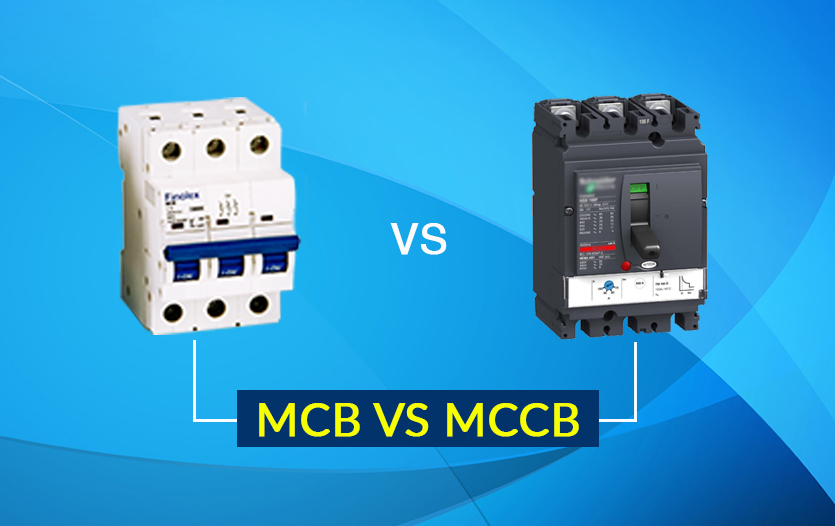Both MCBs and MCCBs are circuit breakers vital in ensuring building electrical safety. They both serve to interrupt the flow of electricity when an abnormal situation occurs, but there are some significant differences between the two that users should understand.
Basic Differences
MCBs (miniature circuit breakers) are designed for low-current circuits. An electromechanical device automatically cuts off the circuit when there is an overcurrent, such as a short circuit.
MCBs operate on a simple principle: the movable contact is separated from the permanent contact when the current exceeds a predetermined limit. It causes the circuit to open and cut off from the main supply, protecting the machinery from damage.
On the other hand, an MCCB is a moulded case circuit breaker that is used for high-current circuits. It is generally used where flexible tripping is required and has a maximum current rating of 2500 amps.
MCCB comprise bimetallic contacts that expand and contract when an overcurrent or temperature increases. They are designed to prevent the circuit from overloading and protect against electrical circuit overload and overheating.
Other Differences
One of the most significant differences between MCBs and MCCBs is their current rating. MCBs have a current rating of 100 amperes, while MCCBs range from 10 to 200 amperes.
The interrupt rating of an MCB is up to 1800 amperes, while an MCCB’s interrupt rating is from 10k to 200k amperes. As a result, MCBs are best suited for lower electrical loads and smaller machines, while MCCBs are designed for heavy-duty machinery and industrial applications.
Another difference between the two circuit breakers is their tripping circuit type. MCBs have a permanent tripping circuit, while MCCBs have a movable one.
The number of poles also varies, with MCBs typically having 1 to 3 poles and MCCBs having up to 4 poles. The pole specifies the number of switching and security phases in circuit breakers for maximum safety.
MCBs are primarily used for low breaking capacity, while MCCBs are used for industrial applications that require both low and high breaking capabilities. When an MCB detects abnormal circumstances, such as electrical outbreaks, it instantly shuts off the circuit to stop the electricity flow. It can also identify short circuits and shut off the power to prevent electrical surges that could damage appliances or result in electrocutions.
MCCBs guard against electrical circuit overload and overheating by using bimetallic parts that respond to overloading in a circuit by expanding and contracting. Due to the overload, the bimetallic components stop the current flow, allowing the MCCB to return to its normal temperature. It prevents electrical fires and any other hazards in an industrial setting.
Conclusion
In conclusion, MCBs and MCCBs have different ratings, tripping circuits, and breaking capabilities, and each is designed for specific applications. Visit Legrand to understand the differences between MCBs and MCCBs, make informed decisions, and choose the right circuit breaker for your needs.





